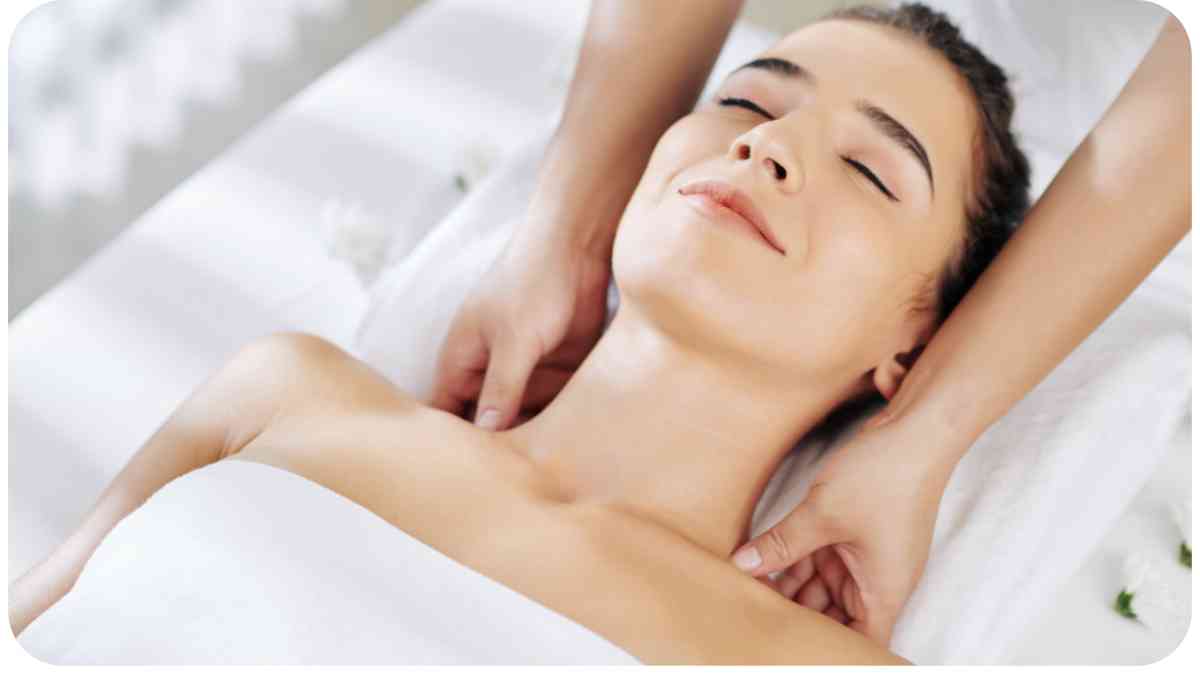Welcome to our comprehensive review on whether massage can help relieve frozen shoulder. If you’re experiencing pain, stiffness, and limited mobility in your shoulder, you’re likely dealing with a condition known as frozen shoulder, or adhesive capsulitis.
In this article, we’ll explore the causes and symptoms of frozen shoulder, traditional treatment options, and the potential benefits of incorporating massage therapy into your recovery journey. Get ready to learn how massage can offer relief, tips for optimizing massage therapy, and even some success stories from individuals who have found relief through this approach.
| Takeaways |
|---|
| Massage therapy can be beneficial for frozen shoulder, providing pain relief and improving range of motion. |
| Combining massage therapy with other traditional treatments like physical therapy can enhance the overall management of frozen shoulder. |
| Regular, consistent massage therapy sessions may offer cumulative benefits in the treatment of frozen shoulder. |
| It is important to choose a qualified massage therapist and communicate openly about your symptoms and comfort level. |
| Self-massage techniques for frozen shoulder should be approached with caution and guidance from a professional. |
2. What is a Frozen Shoulder?
A frozen shoulder occurs when the connective tissue surrounding the shoulder joint becomes inflamed and thickens. This leads to the formation of adhesions, which restrict movement and cause pain. People often experience stiffness and a limited range of motion, making daily activities challenging. While the exact cause of frozen shoulder is still unknown, certain risk factors increase its likelihood.
These risk factors include diabetes, shoulder immobilization, previous shoulder injuries, and specific medical conditions. Understanding the underlying causes and symptoms is essential to finding effective treatment options.
Recent research emphasizes the science behind massage therapy and its profound impact on relieving muscle tension and promoting relaxation. These findings substantiate the potential benefits of massage therapy, shedding light on its therapeutic properties.
3. Causes and Symptoms of Frozen Shoulder

While the exact cause of frozen shoulder remains unclear, researchers believe that it may occur due to an immune response triggered by inflammation or trauma to the shoulder joint. This autoimmune response leads to the thickening and tightening of the capsule surrounding the joint.
People with certain medical conditions like diabetes, heart disease, thyroid disorders, and Parkinson’s disease are more prone to developing frozen shoulder.
The primary symptom of frozen shoulder is pain, which can range from mild to severe. Other common symptoms include stiffness, limited range of motion, and difficulty performing daily tasks such as brushing hair or reaching for objects. As the condition progresses, the pain may subside, but the stiffness may worsen.
4. Diagnosing Frozen Shoulder
Diagnosing frozen shoulder typically involves a thorough examination by a healthcare professional. Your doctor will assess your range of motion, perform certain maneuvers, and may order imaging tests such as X-rays or an MRI to rule out other underlying causes for your shoulder pain and stiffness. Once other potential conditions are ruled out, and the characteristic symptoms of frozen shoulder are identified, a diagnosis can be made.
Exploring studies on massage therapy for chronic pain, we discover its effectiveness in mitigating persistent discomfort. Scientific evidence supports the positive outcomes of massage, offering a holistic approach to managing chronic pain and improving overall well-being.
Table 1: Imaging Tests for Diagnosing Frozen Shoulder
| Test | Purpose |
| X-rays | Rule out fractures or other bone abnormalities |
| Magnetic Resonance Imaging (MRI) | Examine soft tissues and identify any tears or other pathology |
| Ultrasound | Assess the condition of tendons and ligaments |
5. Traditional Treatment Options for Frozen Shoulder
Treatment for frozen shoulder typically involves a combination of medications, physical therapy, and sometimes steroid injections. Let’s take a closer look at these traditional treatment options and their effectiveness in managing frozen shoulder.
5.1 Medications
Medications such as nonsteroidal anti-inflammatory drugs (NSAIDs) can help reduce pain and inflammation associated with frozen shoulder. Over-the-counter medications like ibuprofen or naproxen sodium may be sufficient for mild cases. If the pain is more severe, your healthcare provider may prescribe stronger pain relief medications.
5.2 Physical Therapy
Physical therapy plays a crucial role in the rehabilitation process for patients with frozen shoulder. A physical therapist can guide you through exercises and stretching routines that help improve your range of motion and reduce pain. These exercises may include pendulum swings, wall crawls, and range of motion exercises specifically tailored to address the limitations related to frozen shoulder.
Childhood ailments find relief through specialized massage techniques, addressing common health issues in children. These tailored methods contribute significantly to pediatric care, providing comfort and enhancing the overall health and development of young individuals.
5.3 Steroid Injections
For individuals who experience significant pain and limited mobility, corticosteroid injections may be recommended. Steroids are powerful anti-inflammatory agents that can help alleviate inflammation in the shoulder joint, providing temporary relief. These injections are usually performed by a healthcare professional, often using ultrasound guidance to ensure accuracy.
6. The Role of Massage in Frozen Shoulder Treatment

Massage therapy can be a complementary approach to the traditional treatment options for frozen shoulder. It can help alleviate pain, reduce muscle tension, improve blood circulation, and promote relaxation. Here’s how massage can play a beneficial role in your frozen shoulder recovery.
6.1 How Massage Can Alleviate Pain
Massage focuses on manipulating soft tissues, including muscles and tendons, to alleviate pain and tension. By improving blood flow to the affected area, massage can help reduce inflammation and promote healing. The release of endorphins during a massage session can also help manage pain and provide a sense of relief.
Adults with ADHD benefit from targeted massage therapy, experiencing improved focus and reduced symptoms. Studies indicate that massage can enhance concentration and relaxation, offering valuable support for individuals navigating the challenges of ADHD. Explore this insightful approach to managing ADHD symptoms.
Table 2: Benefits of Massage for Frozen Shoulder
| Benefits |
| Alleviates pain and muscle tension |
| Reduces inflammation and promotes healing |
| Improves range of motion and flexibility |
| Enhances blood circulation |
| Promotes relaxation and stress reduction |
6.2 Massage Techniques for Frozen Shoulder
Several massage techniques can be beneficial for individuals with frozen shoulder. Your massage therapist may incorporate the following techniques to address your specific needs:
- Swedish Massage: This gentle and relaxing massage technique involves long, flowing strokes, kneading, and circular movements. It can help improve circulation, relieve muscle tension, and promote overall relaxation.
- Deep Tissue Massage: Deep tissue massage focuses on reaching the deeper layers of muscles and fascia. It uses more intense pressure to release tension and target specific areas of discomfort.
- Trigger Point Therapy: This technique involves applying pressure to trigger points, which are tight knots in the muscles. By releasing these trigger points, it can help alleviate pain and increase range of motion.
- Myofascial Release: Myofascial release techniques involve applying sustained pressure to release tension in the fascia, the connective tissue surrounding muscles. It helps to improve mobility and relieve pain caused by adhesions in frozen shoulder.
- Stretching and Range of Motion Exercises: In addition to hands-on massage techniques, your therapist may also guide you through stretching and range of motion exercises to improve flexibility and enhance the benefits of massage therapy.
Table 3: Massage Techniques for Frozen Shoulder
| Massage Techniques | Description |
| Swedish Massage | Gentle strokes and circular motions to improve circulation, relieve tension, and relax |
| Deep Tissue Massage | Intense pressure to target deeper layers of muscles and release tension |
| Trigger Point Therapy | Applying pressure to specific knots in muscles to alleviate pain and increase mobility |
| Myofascial Release | Sustained pressure to release tension in the connective tissue surrounding muscles |
| Stretching and Exercises | Guided stretching and range of motion exercises to improve flexibility and mobility |
6.3 Benefits of Massage for Frozen Shoulder
Massage therapy offers several benefits in the treatment of frozen shoulder. Some of these include:
- Pain Relief: Massage helps to alleviate pain associated with frozen shoulder by reducing muscle tension, improving blood flow, and releasing endorphins.
- Improved Range of Motion: By addressing muscular tightness and adhesions, massage can help increase your shoulder’s range of motion and flexibility.
- Enhanced Blood Circulation: The increased blood flow stimulated by massage can promote healing and nourish the affected tissues.
- Relaxation and Stress Reduction: Massage induces a state of relaxation, reducing stress and promoting a sense of well-being.
Athletes prioritize massage therapy in injury prevention due to its crucial role in enhancing muscle flexibility and reducing the risk of injuries. Sports enthusiasts can optimize their performance and minimize setbacks by incorporating regular massage sessions. Discover the preventive power of massage in sports injury management.
7. Precautions and Considerations
While massage therapy can be beneficial for frozen shoulder, there are some precautions and considerations to keep in mind to ensure a safe and effective experience.
7.1 When to Avoid Massage
Massage may not be suitable or may require special considerations under certain circumstances. It is essential to avoid massage if:
- You have an open wound, infection, or skin condition in the area being treated.
- You have a fracture or significant injury to the shoulder.
- You have recently undergone surgery or have a medical condition that requires medical clearance before receiving massage therapy.
7.2 Consulting a Healthcare Professional
It is crucial to consult with a healthcare professional before starting any new treatment, including massage therapy, especially if you have underlying health conditions, allergies, or are taking medications. Your healthcare provider can guide you on whether massage is appropriate for your specific situation.
7.3 Choosing a Qualified Massage Therapist
When seeking massage therapy for frozen shoulder, it is essential to choose a qualified and experienced massage therapist. Here are a few considerations:
- Look for a licensed massage therapist who is trained in providing therapeutic massage for musculoskeletal conditions.
- Check for professional certifications, memberships, and affiliations with reputable massage therapy associations.
- Ask for recommendations from your healthcare provider or trusted individuals who have had positive experiences with massage therapy.
8. Case Studies and Success Stories
Real-life experiences can be inspiring and informative. Here are a few case studies and success stories from individuals who have found relief from frozen shoulder through massage therapy.
Table 4: Success Stories from Massage Therapy
| Success Stories |
| Sarah, a yoga instructor, experienced significant improvement in shoulder mobility and pain reduction after regular massages. |
| John, a construction worker, found that combining physical therapy with massage therapy helped speed up his recovery. |
| Maria, a competitive swimmer, incorporated massage as part of her training regimen and noticed improved shoulder flexibility. |
9. Tips to Optimize Massage Therapy for Frozen Shoulder
To make the most out of your massage therapy sessions for frozen shoulder, consider the following tips:
- Communicate openly: Clearly communicate your symptoms, goals, and comfort level with your massage therapist. This will help them tailor the session to your specific needs.
- Consistency: Consistency is key. Regular massage therapy sessions can provide cumulative benefits and help you progress in your recovery journey.
- Combine with other treatments: Massage therapy can be most effective when combined with other traditional treatments like physical therapy. Consult with your healthcare provider to determine the best combination of treatments for your specific situation.
- Follow post-massage recommendations: Your massage therapist may provide recommendations for post-massage care, such as stretches or home exercises. Following these suggestions can maximize the benefits of the massage session.
- Listen to your body: Pay attention to how your body responds to massage therapy. If something feels uncomfortable or painful, communicate it to your massage therapist immediately. They can adjust their techniques accordingly.
10. Other Complementary Therapies for Frozen Shoulder
In addition to massage therapy, several other complementary therapies may be beneficial for treating frozen shoulder. Here are a few worth considering:
10.1 Acupuncture
Acupuncture involves the insertion of thin needles into specific points on the body. It is believed to stimulate energy flow and promote healing. Some individuals with frozen shoulder have reported positive outcomes with acupuncture, including pain relief and improved range of motion.
10.2 Chiropractic Care
Chiropractic care focuses on the musculoskeletal system, including the spine. Manipulation techniques performed by chiropractors can help reduce pain and improve joint function. Chiropractic care may be beneficial as part of a comprehensive treatment plan for frozen shoulder.
10.3 Heat and Cold Therapy
Applying heat or cold to the affected shoulder can help reduce pain and promote relaxation. Heat can improve blood circulation, while cold therapy can numb the pain and reduce inflammation. Consult with your healthcare provider to determine which therapy is most suitable for you.
11. Preventing Frozen Shoulder
Prevention is always better than treatment. While it may not always be possible to prevent frozen shoulder, certain measures can reduce the risk of developing this condition. Here are some tips:
- Exercises and Stretches: Engage in regular exercises and stretches that help maintain shoulder mobility and flexibility. Focus on gentle range of motion exercises and stretches that target the muscles and tissues surrounding the shoulder joint.
- Maintaining Good Posture: Practice good posture, especially when sitting or working for extended periods. Proper posture helps prevent unnecessary stress on the shoulder joint.
- Regular Movement and Mobility: Avoid prolonged periods of immobility or inactivity. Incorporate regular movement and physical activity into your daily routine to keep your shoulder joint and muscles engaged.
- Avoiding Overuse: Be mindful of overusing or straining your shoulder joint, especially during repetitive motions or strenuous activities. Take breaks and listen to your body’s signals to avoid excessive strain.
12. Conclusion
Massage therapy can be an effective complementary treatment option for frozen shoulder, providing pain relief, improving range of motion, and promoting relaxation. When combined with traditional treatment approaches and an overall holistic approach to wellness, massage therapy offers a well-rounded approach to managing frozen shoulder.
Remember to consult with your healthcare provider, choose a qualified massage therapist, and listen to your body throughout your recovery journey. By taking proactive steps and exploring various treatment options, you can find relief and improve your quality of life with a frozen shoulder.
Further Reading
Here are some additional resources for further reading on the topic of frozen shoulder and massage therapy:
- Frozen Shoulder and Massage Therapy: This article discusses the benefits of massage therapy for frozen shoulder and how it can help alleviate pain and increase range of motion.
- Massage Therapy for Adhesive Capsulitis (Frozen Shoulder): A Systematic Review and Meta-Analysis of Randomized Controlled Trials: This research article provides a scientific analysis of the effectiveness of massage therapy for frozen shoulder based on systematic reviews and meta-analysis of randomized controlled trials.
- Can Massage Therapy Help with Frozen Shoulder?: This blog post explores the potential benefits of massage therapy for frozen shoulder, including pain relief and improved mobility.
FAQs
Here are some frequently asked questions about frozen shoulder and massage therapy:
Can massage therapy cure frozen shoulder?
Massage therapy cannot cure frozen shoulder, but it can help relieve pain, improve range of motion, and support rehabilitation efforts.
How often should I receive massage therapy for frozen shoulder?
The frequency of massage therapy sessions for frozen shoulder can vary depending on the severity of your condition and the recommendations of your healthcare provider or massage therapist. Consistency is key, and your therapist can guide you on the appropriate schedule.
Can massage therapy be combined with other treatments for frozen shoulder?
Yes, massage therapy can be combined with other traditional treatments such as physical therapy, medications, and injections to enhance the overall management of frozen shoulder.
Are there any risks or side effects associated with massage therapy for frozen shoulder?
When performed by a qualified massage therapist, massage therapy for frozen shoulder is generally safe. However, some individuals may experience temporary soreness or discomfort after a session. It is important to communicate any concerns or medical conditions to your therapist.
Can I perform self-massage for frozen shoulder at home?
While self-massage techniques may offer some relief, it is recommended to consult with a professional massage therapist before attempting self-massage to ensure proper techniques and avoid further injury.

Hi! I’m Hellen James, and I’m a massage therapist. I’ve been practicing massage for therapy for years, and it’s an incredible way to help your body get the relief it needs.
I’ve worked with hundreds of clients and seen some really amazing results. Many of them have been people who suffer from chronic pain and massage has been able to help them reduce or even eliminate their reliance on painkillers and other medications.


